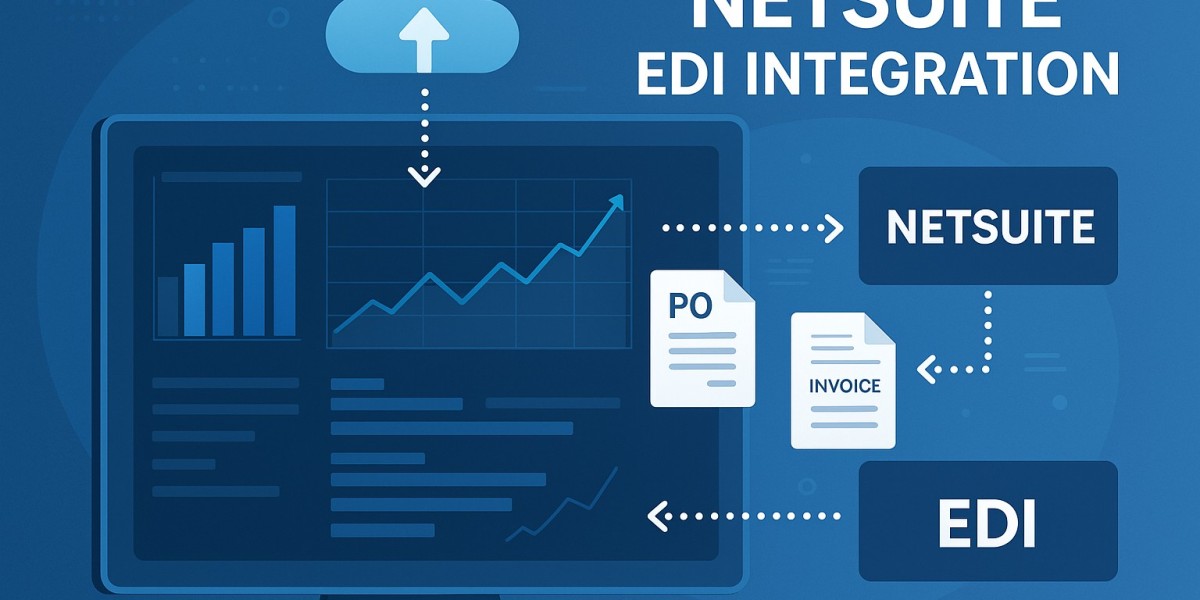Electronic Data Interchange (EDI) has become a critical component for businesses that rely on streamlined, accurate, and automated communication with their trading partners. In the context of ERP platforms like NetSuite, EDI integration allows companies to exchange key documents such as purchase orders, invoices, shipping notifications, and inventory updates in real time.
This article explores the practical aspects of EDI integration NetSuite, common challenges businesses face, and how service providers like UAND Solutions offer structured tools and support to ensure effective implementation. Rather than focusing on promotional content, this piece aims to clarify what EDI integration looks like within NetSuite and how it can be executed efficiently through reliable methodologies.
What Is EDI Integration in NetSuite?
EDI (Electronic Data Interchange) integration within NetSuite involves connecting external business partners—like suppliers, retailers, and logistics providers—with NetSuite ERP to automate the flow of business documents. It removes the need for manual data entry, reducing errors, improving speed, and ensuring data consistency.
In a typical NetSuite EDI setup, integrations must handle formats like X12 or EDIFACT and translate them into NetSuite’s internal record structures. This often involves middleware platforms, custom SuiteScript development, and support for both inbound and outbound document flows.
Common EDI Integration Challenges in NetSuite
Despite NetSuite’s robust architecture, integrating EDI is not plug-and-play. Several technical and operational challenges must be considered:
Data Mapping and Transformation: EDI data must be mapped accurately to NetSuite fields. Mismatched data formats can result in failed transactions.
Custom Business Rules: Each organization may have specific validation or processing rules that require custom scripting or workflows in NetSuite.
Partner-Specific Requirements: Trading partners may demand specific EDI standards or communication protocols.
Error Handling: Without proper error-handling mechanisms, failed transmissions can lead to significant operational delays.
Scalability: As the number of partners and document types grow, maintaining and scaling EDI infrastructure becomes more complex.
These challenges make it essential for businesses to work with solutions that not only provide technical integration but also understand the operational implications of EDI in NetSuite environments.
How UAND Solutions Approaches EDI Integration in NetSuite
UAND Solutions offers a modular and structured approach to implementing EDI within NetSuite. Their focus is on simplifying the architecture while maintaining the flexibility to adapt to partner-specific and industry-specific standards.
1. SuiteScript Development and Customization
UAND Solutions specializes in SuiteScript development, which plays a vital role in transforming and processing EDI documents. Their custom scripts ensure that EDI data is accurately converted into NetSuite records, respecting all business rules and field validations.
2. Integration Frameworks and Middleware Support
UAND Solutions supports integration with common EDI middleware platforms such as Celigo, Dell Boomi, and custom REST/SOAP connectors. Their consultants design solutions that manage end-to-end data exchange between NetSuite and external systems.
3. EDI Transaction Management
They build dashboards and monitoring tools within NetSuite to track inbound and outbound EDI documents. This enables users to manage acknowledgments, reprocess failed transactions, and audit activity in a centralized manner.
4. Partner Onboarding and Custom Logic
With each new trading partner, new specifications often come into play. UAND Solutions handles custom validations, document versions, and scheduling logic that aligns with each partner’s expectations. This reduces friction during partner onboarding and simplifies future updates.
Use Cases of EDI in NetSuite with UAND Solutions
Retail and eCommerce Integration
Retailers often require automated handling of purchase orders (850), invoices (810), and advanced ship notices (856). UAND Solutions supports full-cycle automation of these documents within NetSuite, ensuring compliance with major trading partners and retailers.
Logistics and Fulfillment Automation
Shipping instructions and inventory updates are key for logistics companies. Through custom SuiteScript logic, UAND Solutions enables accurate and timely updates in NetSuite’s item fulfillment, transfer orders, and inventory records based on EDI triggers.
Manufacturing Workflows
Manufacturers using NetSuite benefit from EDI automation for supply chain visibility. EDI data can be used to automatically generate work orders, purchase orders, and demand forecasts within NetSuite, coordinated by integration scripts from UAND Solutions.
Products and Services from UAND Solutions Supporting EDI Integration
While the company’s focus is not limited to EDI, the following services support robust EDI operations within NetSuite:
Custom SuiteScript Development
Used to manipulate and automate EDI data within NetSuite.SuiteTalk and REST API Integrations
Enables real-time data exchange with third-party EDI platforms.EDI Error Monitoring Dashboards
In-built NetSuite views to detect and correct failed transactions.Workflow Automation and SuiteFlow Design
Automates follow-up actions post EDI document reception.Technical Consulting and System Audits
Ensures that EDI systems are scalable, secure, and well-documented.
These services form the foundation of reliable EDI processing in NetSuite and are built to adapt to changing business and partner requirements.
Conclusion
EDI integration in NetSuite is a valuable but complex process that requires a blend of technical development, system design, and ongoing management. Companies need to ensure that their integration strategies are resilient, scalable, and capable of handling dynamic partner requirements.
UAND Solutions contributes to this space by offering focused services around SuiteScript, workflow automation, and integration support—enabling businesses to manage their EDI processes within NetSuite effectively. While not a one-size-fits-all approach, the structured and customizable methodologies they employ offer a path toward sustainable and error-resistant EDI operations.






